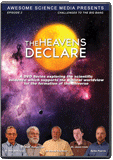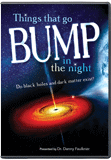
Close to God’s-Eye View of Physical Universe
When it comes to a God’s-eye view of the physical universe, the European Space Agency’s Planck telescope mission may have given us the closest approximation yet.
News Source
- BBC News: “Planck Telescope Reveals Ancient Cosmic Light”
Imagine looking up into a clear, starry night sky, unpolluted by urban light or the overpowering moon. Thousands of stars are visible as you stare above—even though your eyes cannot take in the whole night sky at once. Now imagine that your eyes are so powerful that you can see every star there is in any direction you look, all the way to the edge of the universe. And imagine you do count every star in every direction, night after night, until you can produce a perfect map of every light in the universe.
That mental exercise is a rough approximation of the work of the recently launched Planck mission, whose grandiose goal is to capture—from earth’s viewpoint—the light of the whole universe shining toward us. For Planck’s purposes, however, “light” refers to electromagnetic radiation at wavelengths below the visible spectrum, corresponding especially with cosmic dust.
The telescope has just completed its first attempt at the mission, producing a photographic map of the universe from earth’s perspective. Astronomers hope that repeating the process will help them home in on the most accurate version of the map by accounting for contamination.
As with most large-scale, government-funded astronomy projects, an evolutionary view of the universe motivates the Planck mission. With the data, scientists want to better understand the cosmic microwave background (CMB) radiation that is considered the “first light” from—and a prime evidence of—the big bang. Astronomers also plan to deconstruct the data in search of evidence for “inflation,” a hypothetical hyper-expansion of the universe in the moments following the big bang.
“It’s a spectacular picture; it’s a thing of beauty,” said ESA Planck expert Jan Tauber of the map. And indeed, to call the universe of stars, galaxies, and more around us beautiful, spectacular, awe-inspiring, or marvelous would still be an understatement. Some of God’s most beautiful creations were hidden until the development of powerful telescopes, and the almost unthinkable size of the universe powerfully illustrates the omnipotence and transcendence of our Creator. As for evolutionary astronomers interpretations of Planck’s cosmic map, creationists have alternative models to explain the CMB, and both creationists and many evolutionists have raised problems with inflationary models.
Further Reading
- Does the Big Bang Fit with the Bible?
- The Big Bang
- Does Distant Starlight Prove the Universe Is Old?
- Have Cosmologists Discovered Evidence of Inflation?
- Get Answers: Astronomy, Age of the Earth
For More Information: Get Answers
Remember, if you see a news story that might merit some attention, let us know about it! (Note: if the story originates from the Associated Press, FOX News, MSNBC, the New York Times, or another major national media outlet, we will most likely have already heard about it.) And thanks to all of our readers who have submitted great news tips to us. If you didn’t catch all the latest News to Know, why not take a look to see what you’ve missed?
(Please note that links will take you directly to the source. Answers in Genesis is not responsible for content on the websites to which we refer. For more information, please see our Privacy Policy.)
Recommended Resources

Answers in Genesis is an apologetics ministry, dedicated to helping Christians defend their faith and proclaim the good news of Jesus Christ.
- Customer Service 800.778.3390
- © 2024 Answers in Genesis




